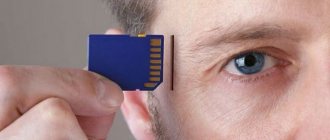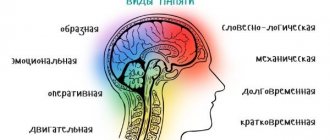Every person’s mood can suddenly deteriorate: due to bad news, an offensive word, or poor health. Someone is trying to hide it from others. Others go to share the problem with their best friend. Still others go for their favorite ice cream to get positive emotions. But there are also those who experience alternating bursts of joy and sadness several times a day. At the same time, they also do not know how to hide their feelings, so everyone around them knows about their unbridled joy and universal sadness. In psychology, for such character accentuation there is a separate concept - labile personality type.
general characteristics
What does a labile type of character accentuation mean? This is a psychotype, characterized by rapid and sharp mood swings against the background of a rich sensory sphere and social responsiveness.
Main features
The main feature is a quick, hardly predictable change in mood and emotions, which manifest themselves as clearly as possible. Such people do not know how to control them and hide them from others.
The labile personality type, which seems harmless at first glance, actually has a whole complex of negative traits that ruin the life of both him and the people around him:
- sharp, uncontrollable, sudden mood swings;
- short temper, irritability, conflict, attacks of aggression up to pugnacity;
- anxiety;
- lack of self-control;
- unpredictability, inadequacy;
- hysterical crying or laughing;
- attacks of apathy;
- jealousy, suspicion;
- poor memory, impaired concentration;
- sadness, despondency, which can lead to depression.
There are also positive features:
- sociability;
- good nature;
- sensitivity, responsiveness;
- devotion, affection;
- sincerity;
- deep feelings;
- well developed intuition.
The “weak link” of a labile person (something that can not only spoil his mood, but also break him psychologically, cause psychological trauma, and lead him to a state of depression):
- emotional abandonment of people significant to them;
- loss of loved ones;
- separation from loved ones.
Conflict situations are those factors due to which labile people’s mood most often deteriorates:
- competition;
- infringement of self-esteem;
- disharmony with others (everyone is good, but he is bad);
- lack of recognition, success, attention;
- fear of punishment;
- criticism.
Briefly, this psychotype can be described as follows. Such people are rarely in a calm state. Every event can throw them off balance. His mood soars (because they smiled at him, he was praised, the sun came out, he passed the project, etc.), and then he sings, dances, and tells jokes to everyone. Then it drops sharply (because the boss looked askance, his head hurt, he made a mistake in the papers, it started to rain, etc.), and then he throws things, cries, refuses to communicate with everyone. And this happens several times a day.
Appearance
The appearance that people with a labile personality type have is distinguished by special features that make them stand out in the crowd:
- an attentive and penetrating gaze, concentrated on one point;
- elongated nose;
- high growth;
- stooped posture;
- jerky, angular movements;
- unsure gait;
- constantly twirls something in his hands;
- conservative style of clothing.
The labile personality type according to Lichko in socionics is an intuitive-logical extrovert (Don Quixote psychotype). And according to Leonhard, the labile type is called somewhat differently - affective.
Intellectual lability
Intellectual lability is one of the components of the lability of the nervous system and is responsible for the processes of switching between the processes of activation and inhibition. In life, this looks like a fairly high level of mental development and the ability to logically analyze incoming information. Since a critically huge number of information blocks that require perception are received every second, there is a need to sort them as quickly as possible (at a subconscious automatic level) into significant and insignificant.
The presence of a large knowledge base in memory becomes irrelevant and indicates not intelligence, but erudition; much more significant is the ability to switch between different sources of information, between different information in meaning, and also in the shortest possible time move on to solving the next one (even if it is the opposite one). ) tasks. At this switching speed, the main thing is to maintain the ability to highlight the main thing for the task at a given time. It is precisely this process of intellectual work that ensures high intellectual lability.
Previously, they did not know about this property, then they talked about it, but rarely, and now, when the pace of life is accelerating, the amount of information consumed is growing at such a pace that a person who lived two hundred years ago would have needed a month to realize that we process within an hour , this becomes a determining factor for success. This gives the ability to respond adequately and as usefully as possible in changing conditions, promotes instant analysis of many factors, which allows minimizing the possibility of error.
In addition, quickly switching between different topics and issues provides innovative thinking, new ways to solve old problems, and rapid assimilation of knowledge and skills, and this happens at a deeper level. For example, historical data on the same event, gleaned from different sources (here one cannot do without using the capabilities of the modern world) provides a more objective and comprehensive understanding than citing the point of view of the author of the textbook. The ability to learn quickly is due to the fact that there is no need to tune in to the arrival of material - ten minutes of reading an article in a minibus, accompanied by listening to new music, or writing a thesis with breaks to watch educational videos becomes a familiar way of functioning, providing new opportunities.
Compatibility
In order to build the right relationships with others, it is useful for a person with a labile personality type to know his compatibility with other character accentuations:
- + labile = identity, mutual understanding, mutual assistance, support, harmonious relationships;
- + hyperthymic-unstable = personality types that complement each other; relationships optimal for friendship and marriage;
- + hyperthymic = pulsating relationships: sometimes easy and relaxed, sometimes boring and annoying, so these types need to take a break from each other from time to time;
- + psychasthenic = mirror relationships, but the mirror turns out to be distorted: one corrects the other without delving into the essence of his behavior - this leads to misunderstandings and claims;
- + hysterical = patronage relationship (on the part of the labile type) without feedback;
- + schizoid = the auditor (labile type) constantly finds fault with the sub-auditor (schizoid), tries to teach him and re-educate him;
- + cycloid = average degree of comfort in a relationship, when you have nothing against your partner, but you don’t feel any particular sympathy for him;
- + comfortable-hyperthymic = relaxation relationship: with such a partner it’s nice to relax and discuss extraneous topics, but you definitely won’t do business with him.
This information will help you build the right relationships with others - friends, colleagues, loved ones and family.
Relationships with other people
It is difficult for a cyclothymic person to build strong relationships with people because they do not know what to expect from him at the next moment. The Cycloid is so unpredictable in his speech or behavior that friends and acquaintances prefer to stay away in order to avoid the troubles that constantly haunt their unbalanced acquaintance.
A cyclothymic person’s communication difficulties lie in the fact that he does not build any specific line of behavior, he does not have a specific goal to which he strives every day. His plans for the future are too illusory or frightening with their grotesqueness and unrealizability. It is difficult for people to understand a cyclothymic person who lives in dreams and idealizes people of the opposite sex for whom he has sympathy.
This is a man of chaos, a storm, sweeping away everything in its path and not thinking about the consequences. The difficulties lie in the fact that the cycloid does not analyze what is happening with a cold and calm mind, but rushes into a new battle in life, leaving behind “ashes” and heartbroken loved ones.
Types of labile accentuation
Labile-hysterical:
- distorted self-esteem;
- dependence on the opinions of others;
- an irrepressible fantasy in which such individuals will invariably see themselves as a hero and winner.
Labile-affective:
- outbursts of excitability without targeted aggression towards others;
- frequent changes not only in mood, but also in interests;
- lack of concentration, due to which study and work suffer;
- distorted self-esteem makes it difficult to communicate with society.
Emotionally labile type (labile-sensitive):
- excessive expression of emotions;
- unexpected actions dictated by emotions that violate norms of behavior;
- grievances manifest themselves in hysterical laughter, joy - in a river of tears.
Labile-conformal:
- difficult to cope with your emotions;
- inability to criticize either one’s own actions or those of others;
- difficulties in adapting to new conditions.
Highlighting
There is also a labile-cycloid subtype. Its distinctive feature is its cyclical, rather than chaotic, mood changes. Many subtypes represent ordinary character accentuations. However, there are also those who are on the verge of psychopathology. Under the influence of conflict situations and traumatic factors, they can become mental disorders. These include labile-affective, labile-sensitive and labile-hysterical.
This is cycloids in psychology. Cycloids and schizoids.
The identification of cycloid and schizoid personality types belongs to the German psychiatrist E. Kretschmer
Among the mental characteristics that served as the basis for his typology, a sense of humor occupies an important place.
Cycloids are sociable and good-natured. Kretschmer identified two types of them: hypomanic and melancholic. Hypomanic cycloids are cheerful, prone to humor, and are distinguished by liveliness and wit. Melancholic people are prone to sadness, passive, lethargic, soft, compliant. These two varieties should rather be considered as two opposite phases of the cycloid temperament; transitions from one phase to another are usually observed. But in any phase they differ in their rich emotional life.
People with cycloid temperament may not be very similar to each other. Kretschmer distinguished five main subgroups: a) cheerful talkers, b) calm humorists, c) quiet, sincere people, d) sybarites, e active practitioners.
The temperament of cycloids is oriented along the axis of sadness - cheerfulness. Moreover, there is never complete predominance of one of these poles of mood. Among melancholic people one can find a touch of humor, even if a bit gloomy; and in a joyfully excited cycloid one can always detect an admixture of sadness. Kretschmer called the quantitative measure of this mixing the proportion of mood. Cycloid temperament is characterized by the pace (fast and slow) of mental processes; This is a very important feature of people belonging to this type.
The cycloid temperament is opposed to the schizoid one. People belonging to this type are also very different. Among them are those who withdraw into themselves, timid, grumpy, grumbling, stupid, rude, sarcastic (prone not to humor, but to sarcasm), “Extremists” (they do not have a reconciling middle, they either admire or hate. Kretschmer divided schizoids into three large subgroups:
A) unsociable, devoid of humor, with oddities and quirks; b) shy, sensitive, lovers of nature and books; in indifferent - stupid, dutiful, fearless.
Unlike the cycloid temperament, which lies between the poles of joy and sadness, the schizoid temperament is oriented along the axis of excitability - coldness. In schizoids, there is also no complete dominance of one of these poles, but a mixture is observed. Its quantitative measure is psychaesthetic proportion.
We remind you that these proportions are measured in cycloids and schizoids not on the same scale, but on different ones. There is one more difference: the mood proportions of cycloids fluctuate in waves, and mood transitions are smooth and gradual. Schizoids have abrupt shifts and are subject to sudden shifts.
The diversity of schizoid types is determined not so much by the pace of mental processes (as in cycloids), but by oscillations between persistence and capricious inconstancy. In this sense, cycloids and schizoids are, as it were, in different dimensions. There are also many specific manifestations of that feature of schizoids that is characterized by “Self-locking”. This trait sometimes manifests itself as indifferent egoism, an exaggerated sense of self-worth; sometimes a penchant for abstract-theoretical schemes for improving the education system, arrogant confidence in one’s ability to show humanity the path to universal prosperity, the creation of projects for improving the world. At the same time, their love for humanity in action is always greater than their love for a specific person. F. M. Dostoevsky wrote about such people: “a friend of humanity with shaky moral foundations is a cannibal of humanity, not to mention its vanity; for offend the vanity of one of the forces of countless friends of humanity, and he is immediately ready to set the world on fire at all four ends...”
These mental traits are incompatible with a developed sense of humor, with the ability to treat one’s own person, if not with laughter, then at least with a good-natured, condescending smile. The most desirable feelings for a schizoid are those that belong to the so-called gloric group (according to Dodonov.
Reasons for formation
Like all other character accentuations, the labile personality type is innate. However, there are factors that can aggravate its manifestations. These include:
- choleric type character;
- peculiarities of upbringing (when the child was not taught to control his emotions or was simply spoiled);
- impaired functioning of the nervous system: neuroses, childhood psychotraumas, severe stressful situations, unpreparedness for global changes;
- physiology: traumatic brain injury, drug addiction, oncology, cardiovascular diseases.
To correct behavior with problems related to the central nervous system, you should consult a psychiatrist. If the issue is physiological, treat existing
Features of education and advice
It is necessary to communicate with a teenager as with an adult.
A cycloid character may be the result of adolescence, a consequence of hormonal changes in the body. A teenager is not always able to cope with his attacks of apathy and despondency on his own. A sudden change in mood can have a serious impact on interaction with peers and provoke conflict with parents and teachers. This is what increases the chances of developing a breakdown, and often suicide. The trouble is that not every school has a psychologist; not every child will agree to communicate with him, much less listen to his recommendations.
It is important that parents have the opportunity to notice changes in their child’s behavior in time and never leave him alone with his problems, even if there is an opinion that everything is fine with the child. And if any deviations are noticeable, then it is better to seek help in time, not to hope that everything will resolve on its own
The trouble is that some parents mistake ordinary laziness or insufficient sleep for subdepression. They are more likely to assume that their child is drug addicted or in love than to be depressed.
It is important to be able to talk with your child, but not as an adult with a child, but as an adult with an equal. It is unacceptable to impose your care, excessive control. This will only aggravate the situation. Parents are obliged to show that they love, value their son or daughter, and are ready to pay attention to him. It will be much easier for a person at any age to cope with his decline in mood if he has the opportunity to spend time with people dear to him and good friends who will help cheer him up by talking about positive events. It is important that such a person can predict the approaching subdepression and not plan important meetings or urgent matters during this period. It is unacceptable to self-medicate or prescribe medications without consulting a doctor. If there is a need for them, everything should be under the supervision of a specialist. It is unacceptable to try to cope with the state of apathy with the help of alcohol.. https://www.youtube.com/embed/SegHMB8DOss
Now you know what a cycloid personality type is. Here, as with other psychotypes, there is both bad and good. When raising a child with this type, parents may not notice the characteristic manifestations. But they must be ready to provide the necessary assistance when subdepression occurs in a child, and sometimes even visit a psychologist with the child.
Diagnostics
Want to know if you are a labile personality type? Take the test and calculate your results.
If the test results score from 0 to 10, you are far from being a labile type in terms of displaying emotions and mood swings. Those who get from 11 to 20 points are sometimes similar to similar people, since they do not always cope with the feelings that overwhelm them, but this happens extremely rarely. The range from 21 to 25 points indicates a borderline, very close stage to this character accentuation. Its brightest representatives are those who scored more than 26 points.
Cycloid type
Cycloid accentuation of character according to Lichko is characterized by high irritability and apathy. Children prefer to be alone at home instead of playing in the company of peers. They experience any troubles hard and become irritated in response to comments. The mood changes from good, elated, to depressed at intervals of several weeks.
With growing up, the manifestations of this accentuation usually smooth out, but in some people they can persist or get stuck for a long time in one stage, often a depressed-melancholic one. Sometimes there is a connection between mood changes and the seasons.
Features of communication
People with the described accentuation have many difficulties in communicating with others.
What are they like in love:
- capable of deep, true feeling;
- faithful and devoted;
- they are not sure about the person who is nearby: when they are in a good mood, he is ideal for them; when it’s bad, it’s unnecessary ballast;
- a prolonged period of flirting;
- for them, the family is a refuge for restoring internal balance;
- the spouse is perceived as a friend and ally;
- sex is the last thing they are interested in;
- are having a hard time with the breakup - it can take years to recover.
Those who are in a relationship with such a psychotype must be patient in order to endure the minute-by-minute outbursts of tears and joy. Even in a friend, they most often look for a psychotherapist to share their sorrows. But at the same time they are distinguished by their devotion and are always ready to help.
They are quite responsible at work and always bring projects to completion. They treat their colleagues evenly; intrigue is not their strong point. They never set anyone up, they help out if necessary. However, career advancement is hampered by temperament and restlessness. In those moments when they cannot contain their emotions, they are capable of being insolent to their boss, tearing up important papers, and disrupting a meeting.
How to behave with a labile psychotype:
- Don’t take their mood changes personally;
- find a business that will captivate both parties;
- during times of distress, console and support;
- constantly encourage, praise even for the smallest achievements;
- ask every time about the reasons for the bad mood, and convince that it is not worth worrying about;
- never use aggressive methods of influence;
- avoid conflicts by any means.
What is lability
In scientific applications, lability is used synonymously with mobility (normally), instability (in pathology) and variability (as a characteristic of the dynamics of a state and processes). To understand the breadth of use of this term, we can consider examples of the fact that there is lability of mood in body temperature, psyche and physiology, and accordingly applies to all processes that have speed, constancy, rhythm, amplitude and other dynamic characteristics in their indicators.
The course of any processes in the body is regulated by the nervous system, therefore, even when talking about indicators of pulse or mood lability, we are still talking about the degree of lability of the nervous system (central or autonomic, depending on the location of the instability). The autonomic nervous system regulates internal organs and systems; accordingly, the general condition of the body depends on its work, the ability to maintain rhythm and stability of processes.
Autonomic lability brings disturbances in the functioning of the heart (manifestations appear in the form of arrhythmia, problems with blood pressure and as vegetative-vascular dystonia), the functioning of the glands (problems with sweating or the production of substances necessary for the quality functioning of the body may begin). Many seemingly psychological problems or those related to the central nervous system are actually solved at the level of reducing autonomic lability, which ensures productive sleep and the absorption of beneficial microelements. At the same time, it is worth remembering that signaling about the level of stress or a critical emotional situation is primarily not the central system, but the autonomic system, by increasing its lability. Mechanisms that activate the work of all organ systems to overcome difficult or extreme situations use the internal reserves of the body, forcing the heart to speed up the rhythm, the lungs to absorb more air, the iron to remove excess adrenaline through sweat, and only then the central nervous system reactions are activated.
Lability of the nervous system or mental lability is characterized by a pathological state of mood disturbance, expressed in its swings and inconstancy. The condition may be the norm for adolescence, but is classified as a spectrum of pathological conditions for adults and requires medical care, as well as the work of a psychologist, even without prescribing medications.
Correction
Recommendations from psychologists on how to work on yourself are as follows:
- Give up self-criticism so as not to once again cultivate feelings of guilt. Learn to respect yourself.
- Take responsibility for your actions.
- In the evening, make yourself a plan for the whole next day and strictly follow it point by point.
- To control emotions, you need to subjugate your body. To this end, take up dancing, exercise, and sports.
- Learn to track the causes of mood deterioration and, if possible, avoid them.
You can take up psychotraining and perform several exercises on your own.
- Exercise "Analyst"
Imagine yourself as an analyst who always analyzes everything. Your task is to pick apart the factors that contribute to the deterioration of your mood. As soon as you feel that irritation or apathy is overwhelming you, start thinking about why this happened. Try not to miss a single little thing: maybe someone said something, elbowed you, didn’t call, etc. Think about why this upset you so much. Record your findings in a separate notebook. Make notes every time you get nervous. After a couple of weeks, re-read the results of your analytical work. Summarize what most often drives you crazy. Try to avoid these factors.
- Exercise “Getting into the Role”
Choose any positive role for yourself in the evening and try to get used to it as much as possible, starting in the morning, throughout the day. You do not have the right to deviate even one step from the designated character, no matter how much you would like to do so. For example, if you decide to be phlegmatic, you need to be calm and balanced, despite mood swings.
- Exercise "Alternative"
Your task is to learn to catch those moments when your mood begins to change for the worse. As soon as this happens, find an alternative activity that will help you release irritation and anger and give you moments of happiness and peace. For example, go for a walk in the park. Or eat ice cream. Or do some breathing exercises. Everyone will have their own method. The main thing is to learn to take control of emotions and promptly replace them with a worthy alternative.
If a person understands that he is not able to cope with emotions on his own, there is no need to hesitate to turn to psychotherapy, which has its own methods of working with such character accentuations:
- drug therapy: antidepressants, sedatives;
- psychotrainings aimed at improving concentration, family relationships and social contacts, and relieving emotional stress;
- treatment of somatic diseases;
- a strict daily routine with meals and walks in the fresh air by the hour and proper sleep;
- balanced diet;
- massotherapy;
- exercise therapy;
- hypnosis.
Despite the duration of the psychotherapeutic course of correction, the prognosis is usually favorable.
Types of psychotypes
Leonhard's accentuation considers cyclothymia as an extreme variant of the norm, not a disease. From the category of people with affective psychoses, 2 groups are distinguished:
- typical;
- labile.
A typical cyclothymic individual is a person who experiences periods of ups and downs in mood with the same frequency - 2-3 weeks. The first crisis occurs in adolescence. An active and active teenager suddenly ceases to be interested in what is happening around him, shuns his peers, and spends time alone.
He thinks about the meaning of life, he is not satisfied with the existing state of affairs, and a feeling of his own inferiority arises. Any criticism addressed to oneself is perceived very painfully and can become an impetus for attempting suicide. The very fact of the desire to die is not advertised; the action is performed under the influence of passion.
Depression gives way to emotional uplift; this can be influenced by a new acquaintance, a long-awaited letter, financial encouragement - that is, any pleasant event that becomes a trigger for the transition from the hypothymic to hyperthymic phase. A person is actively interested in current events, empathizes, jokes, and is the center of attention. He is sociable, cheerful, manages to do a lot of things in a day, returns to his old hobbies, and shows affection for people he likes. After 2-3 weeks, in a typical cyclothymic, the light bulb is turned off again, and the whole world becomes dull and gray for him.
In labile cycloids, ups and downs in mood occur at short intervals: each period lasts 2-3 days. These are active, inquisitive, cheerful, charming people who have an unstable character. They are easily upset or offended, they are sensitive to what is happening, react sensitively to changes in attitude towards themselves, and are sensitive to cardinal changes in life. They plunge into depression deeply, hopelessly, and attempts to get them out of this state lead nowhere: the cyclothymic person at this moment is convinced that life is over for him and there is nothing to be happy about.
2-3 days pass and close people note that the cycloid has a sparkle in his eyes, he plans some meetings, talks a lot on the phone, and makes grandiose plans for the future. A typical feature of labile cyclothymics is an overestimation of their own capabilities. They cannot really assess the current situation and at this time they often commit expansive, risky actions that threaten their health and life.
Examples of characters and famous personalities
Examples of famous people and characters with a labile personality type:
- Don Quixote is the main character of Miguel de Cervantes's novel The Cunning Hidalgo Don Quixote of La Mancha;
- Milla Jovovich is an American actress, model and fashion designer;
- Masyanya is the main character of the animated series of the same name, a broken girl with anarchist inclinations;
- Gromozeka is a character in books about Alice Selezneva by Kira Bulycheva and cartoons based on them (“The Secret of the Third Planet,” for example), a professor of archeology from the planet Chumarosa;
- Edward Norton - American actor, producer, director (main role in the film "The Incredible Hulk");
- Russell Crowe is an Australian and American actor and director (roles in the films “Gladiator”, “A Beautiful Mind”, “Les Miserables”);
- Olga Buzova is a Russian TV presenter, actress, singer, former participant and later host of the reality show “Dom-2” (“TNT”).
You may also be interested in:
Cyclothymia: symptoms, signs and diagnosis
Cyclothymia, or in the old cycloid (cyclothymic) character, is an alternation of ups and downs of mental and physical activity of varying intensity. The person experiences difficulties, but continues to work and socialize, in contrast to the severe mood swings (from deep depression to mania, euphoria) that are characteristic of bipolar affective disorder.
Rising period:
- increasing labor efficiency;
- acquiring new and updating old interests;
- state of inspiration and complete well-being;
- reducing night sleep to 5–6 hours.
Period of decline:
- habitual activities may not objectively suffer, but require greater volitional effort;
- narrowing of motivation, which is often interpreted by the patient and others as laziness;
- low mood, loss of strength, drowsiness;
- a feeling of vague malaise from various organs.
Thus, when talking about cyclothymia, symptoms are divided into two groups, but their totality and the predominance of rise or fall, as well as the patterns of their alternation, are always assessed.
Symptoms always correspond to periods, but periods can occur in different orders and at different time intervals.
To diagnose cyclothymia you need to:
Clinical and anamnestic examination is an assessment of the patient’s symptoms and life events (developmental conditions, injuries, stress and overload, infectious and endocrinological diseases) by a psychotherapist.
Pathopsychological examination - performed by a clinical psychologist; the specialist evaluates personal characteristics (attitudes, motivation) and cognitive functions (thinking, attention, memory).
Laboratory and instrumental methods - for differential diagnosis with organic and endogenous pathology; use the Neurophysiological test system, Neurotest, EEG.
Consultations of candidates, doctors of science, councils of several specialists are indicated when the disease is difficult to treat and the diagnosis is in doubt.
Accentuations of character from the point of view of A. E. Lichko
A. E. Lichko was the first to propose replacing the term “personality accentuation” with “character accentuation,” citing the fact that it is impossible to unite all a person’s personal characteristics by defining only accentuation. Personality is a much broader concept, including worldview, characteristics of upbringing, education, and response to external events. Character, being an external reflection of the type of nervous system, serves as a narrow characteristic of the characteristics of human behavior.
Like Karl Leonhard, A.E. Lichko considered accentuation a variant of character deformation, in which individual traits become excessively pronounced. This increases the sensitivity of the individual to certain types of influences and makes adaptation difficult in some cases. At the same time, in general, the ability to adapt remains at a high level, and with some types of influences (that do not affect the “place of least resistance”), accentuated individuals cope more easily than ordinary ones.
A. E. Lichko considered accentuations as borderline states between normality and psychopathy. Accordingly, their classification is based on the typology of psychopathy.
A. E. Lichko identified the following types of accentuations: hyperthymic, cycloid, sensitive, schizoid, hysteroid, conmorphic, psychasthenic, paranoid, unstable, emotionally labile, epileptoid.
Definition
According to the official definition in force today, lability is the time during which tissue restoration occurs after a cycle of excitation.
For example, the highest rate of lability was recorded in axons (nerve cells). In 1 s they can create up to 1000 pulses. But synapses (nerve endings) transmit no more than 150 excitations per second to skeletal muscles.
This means that they have reduced lability. Lability itself is not a constant value; on the contrary, it can constantly change. This is a theory of physiology that belongs to N. E. Vvedensky and is considered relevant.
There is also the concept of mental lability, which is considered by psychology. We are talking about a person’s unstable mood, emotional overexcitability, inadequate and too harsh reaction to certain events. And again, the meaning of this concept comes down to instability and variability.
Many experts argue that the concept of lability should be considered from the point of view of psychology and physiology at the same time, since such conditions usually reflect each other well. An integrated approach to assessing lability allows us to better understand the causes of psychological and physiological problems, since they are closely interrelated.
For example, a person was unexpectedly fired from a well-paid job in which he worked well for many years. If a person does not have problems with the nervous system and psyche, then he, of course, will be upset and try to find out the reasons for the dismissal. After that, he will begin searching for a new place of employment. He will not make a scandal, because he understands that this will lead nowhere.
If a person has increased lability, then he may begin to cry, throw objects around in the boss’s office and make trouble in every possible way. Along with an obvious mental problem, he will also clearly show signs of a disorder of the autonomic system.
You can easily notice redness of the face, sweat on the forehead, tremors, and rapid breathing. All this is already physiological signs. That is, the excitation speed is too high, and the response impulses do not have time to arrive.
With reduced lability, the person will simply take the documents and leave. He won't have any feelings about being fired, as if he doesn't care. Such people never show demonstrative reactions. The same picture is observed at the physiological level.
Lability is a concept in psychology and physiology that defines instability. However, this does not mean that we are talking specifically about a person’s negative state. Thanks to lability, adaptation to the environment occurs.
If a person does not show any signs of lability at all, then not only does he not behave excitedly when he is angry, but he also cannot experience joy and happiness. Therefore, normal personality development is considered to be when a person experiences lability. But an excessive degree of increased or decreased lability indicates mental and physiological problems.
https://www.youtube.com/watch?v=sbBauk4bRas










